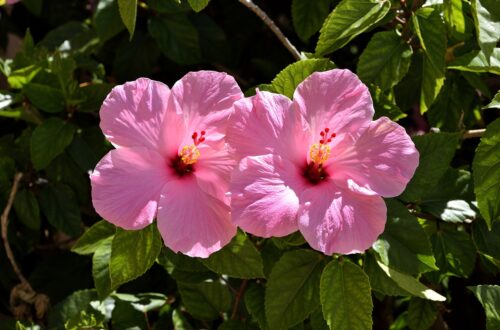
How to Grow and Care for Strawflowers
Have you ever wanted to add a touch of everlasting beauty to your garden? Strawflowers, with their vibrant, papery blooms and impressive longevity, are the perfect choice! These charming flowers, also known as Xerochrysum bracteatum, bring a splash of color and a unique texture to any garden. Not only do they create a stunning display, but they also make excellent dried flowers for arrangements and crafts. Read on to discover how to grow and care for these delightful flowers to ensure they thrive in your garden.
Understanding Strawflowers
Strawflowers are a popular choice among gardeners for their bright colors and long-lasting blooms. Native to Australia, these hardy annuals are known for their distinctive, papery petals that retain their shape and color long after they are cut. They come in a range of colors including yellow, pink, red, and orange, and their blooms can resemble daisies or sunflowers. Strawflowers are versatile, thriving in various soil types and climatic conditions, making them suitable for many gardens. Their resilience and decorative appeal make them a favorite for both garden beds and dried floral arrangements.

Choosing the Right Location
Selecting the right location is crucial for the success of your strawflowers. These plants thrive in full sun, meaning they need at least six hours of direct sunlight each day to produce their vibrant blooms. A sunny spot in your garden will ensure that they grow strong and healthy. Additionally, strawflowers prefer well-drained soil to prevent root rot and other issues associated with waterlogged conditions. If your garden soil tends to retain moisture, consider amending it with sand or compost to improve drainage. Raised beds or containers can also be effective for growing strawflowers, especially if you have heavy or clayey soil.
Soil Preparation
Proper soil preparation is key to growing healthy strawflowers. They prefer soil that is rich in organic matter and has good drainage. Before planting, test your soil’s pH; strawflowers thrive in slightly acidic to neutral soil, with a pH range of 6.0 to 7.0. If your soil is too acidic or alkaline, you can amend it with lime or sulfur to adjust the pH. Incorporate compost or well-rotted manure into the soil to improve its fertility and texture. This organic matter will enhance the soil’s ability to retain moisture while also providing essential nutrients. For optimal growth, ensure that the soil is loose and crumbly, allowing the roots to expand easily.
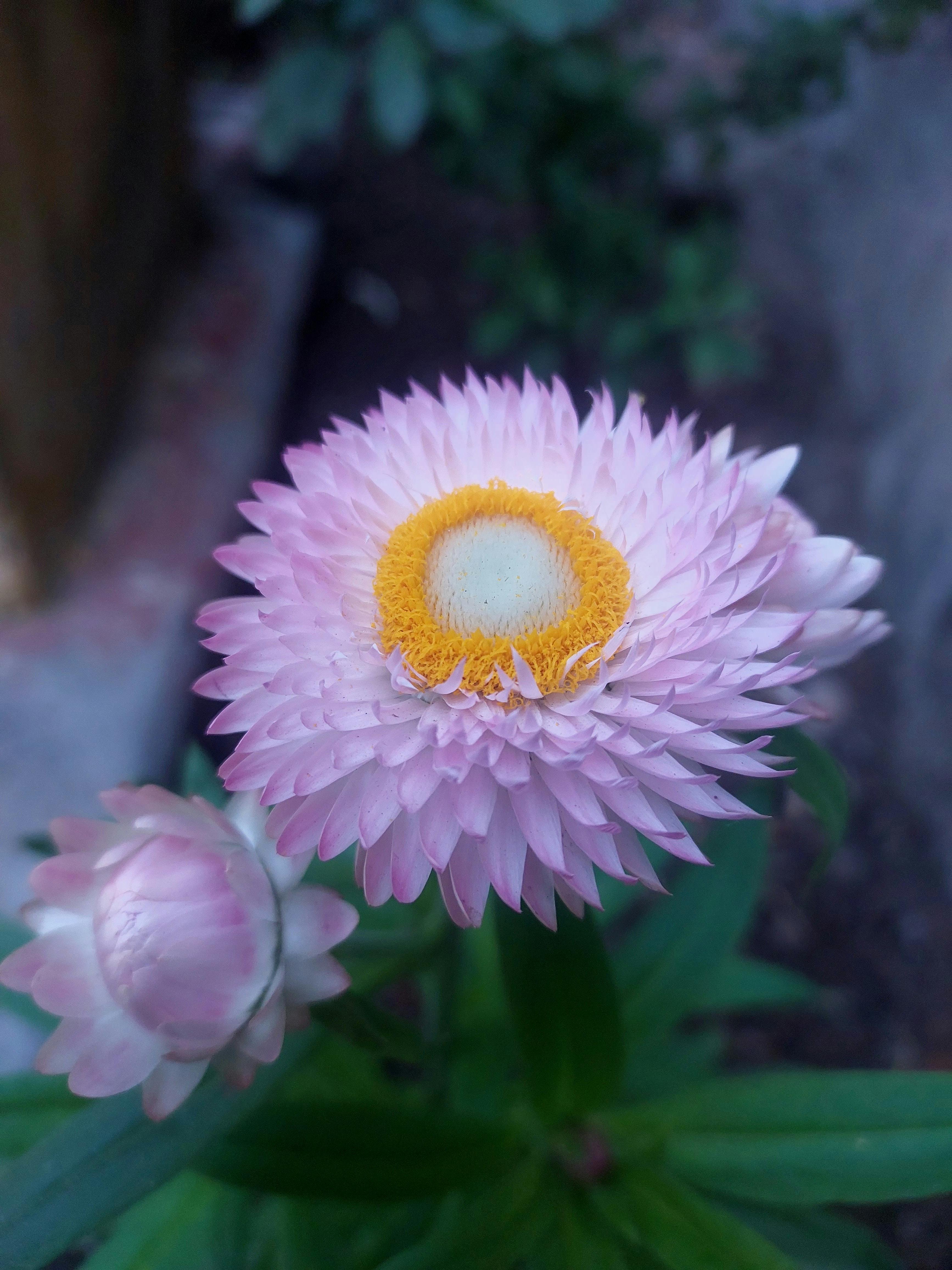
Planting Strawflowers
The best time to plant strawflowers is after the danger of frost has passed, as they are sensitive to cold temperatures. You can start seeds indoors about 6 to 8 weeks before the last expected frost, or sow them directly into the garden once the soil has warmed up. When planting seeds, sow them about 1/4 inch deep and space them approximately 12 inches apart to allow for their mature size. If you are starting seedlings indoors, use seed trays or pots with well-draining soil and provide plenty of light to promote strong growth. Once the seedlings are large enough to handle and the outdoor conditions are favorable, harden them off by gradually exposing them to outdoor conditions before transplanting.

Watering and Fertilizing
Strawflowers have moderate water needs and should be watered regularly to keep the soil consistently moist, but not soggy. Overwatering can lead to root rot, so it’s important to ensure that the soil drains well and that you do not water too frequently. Allow the top inch of soil to dry out between waterings. During dry spells or hot weather, you may need to water more frequently to keep the plants hydrated. Fertilize strawflowers once a month with a balanced, all-purpose fertilizer to support healthy growth and abundant blooming. Avoid excessive fertilization, as too many nutrients can lead to lush foliage at the expense of flower production.
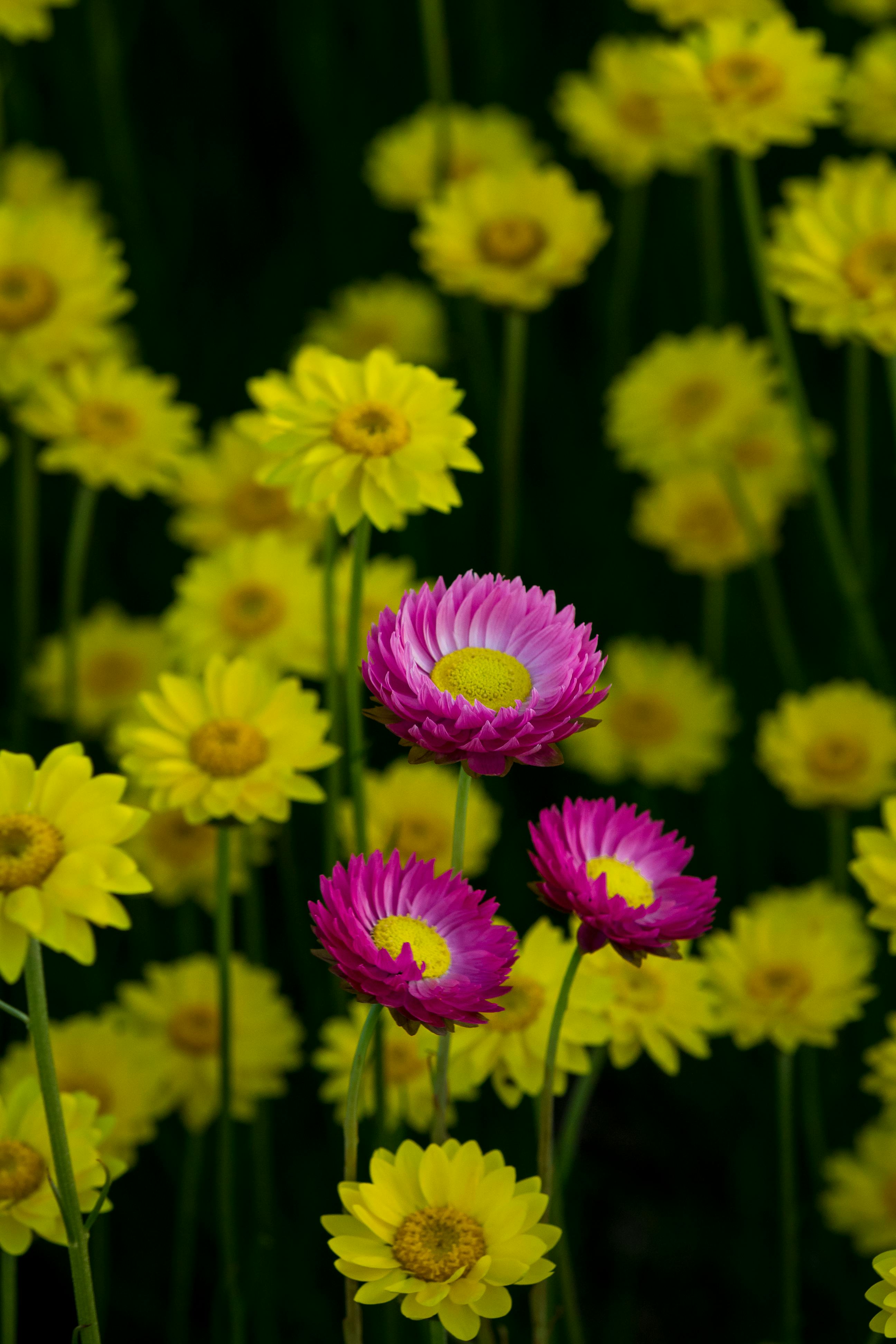
Pruning and Deadheading
Regular pruning and deadheading are essential for maintaining the health and appearance of strawflowers. Deadheading, or removing spent flowers, encourages the plant to produce new blooms and prolongs the flowering period. Use clean, sharp scissors or pruning shears to snip off faded flowers just above the next set of healthy buds. In addition to deadheading, you can prune strawflowers to keep them compact and prevent them from becoming leggy. Pinching back the tips of the plants when they are young can encourage branching and result in a bushier, more flower-filled plant. Remove any dead or damaged foliage to keep the plants looking their best.
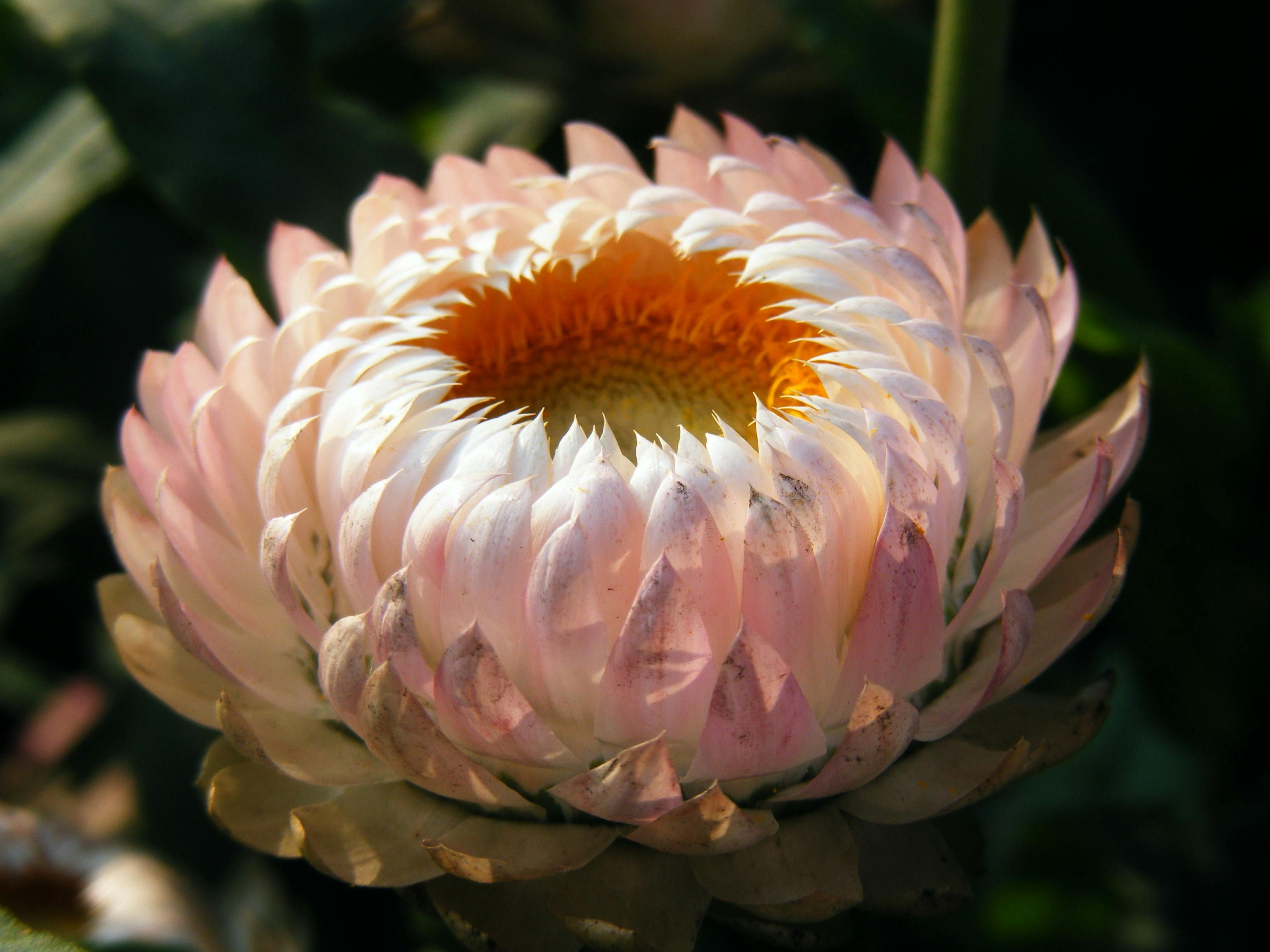
Pest and Disease Management
Strawflowers are relatively pest-resistant, but they can occasionally be affected by certain issues. Common pests include aphids, spider mites, and caterpillars. Regularly inspect your plants for signs of pests and use insecticidal soap or neem oil to manage infestations. Fungal diseases, such as powdery mildew and rust, can also occur, particularly in humid conditions. To prevent fungal problems, ensure proper spacing between plants for good air circulation and avoid overhead watering. If you notice any signs of disease, remove affected plant parts and apply a fungicide if necessary. Keeping your garden clean and well-maintained will help reduce the risk of pest and disease issues.
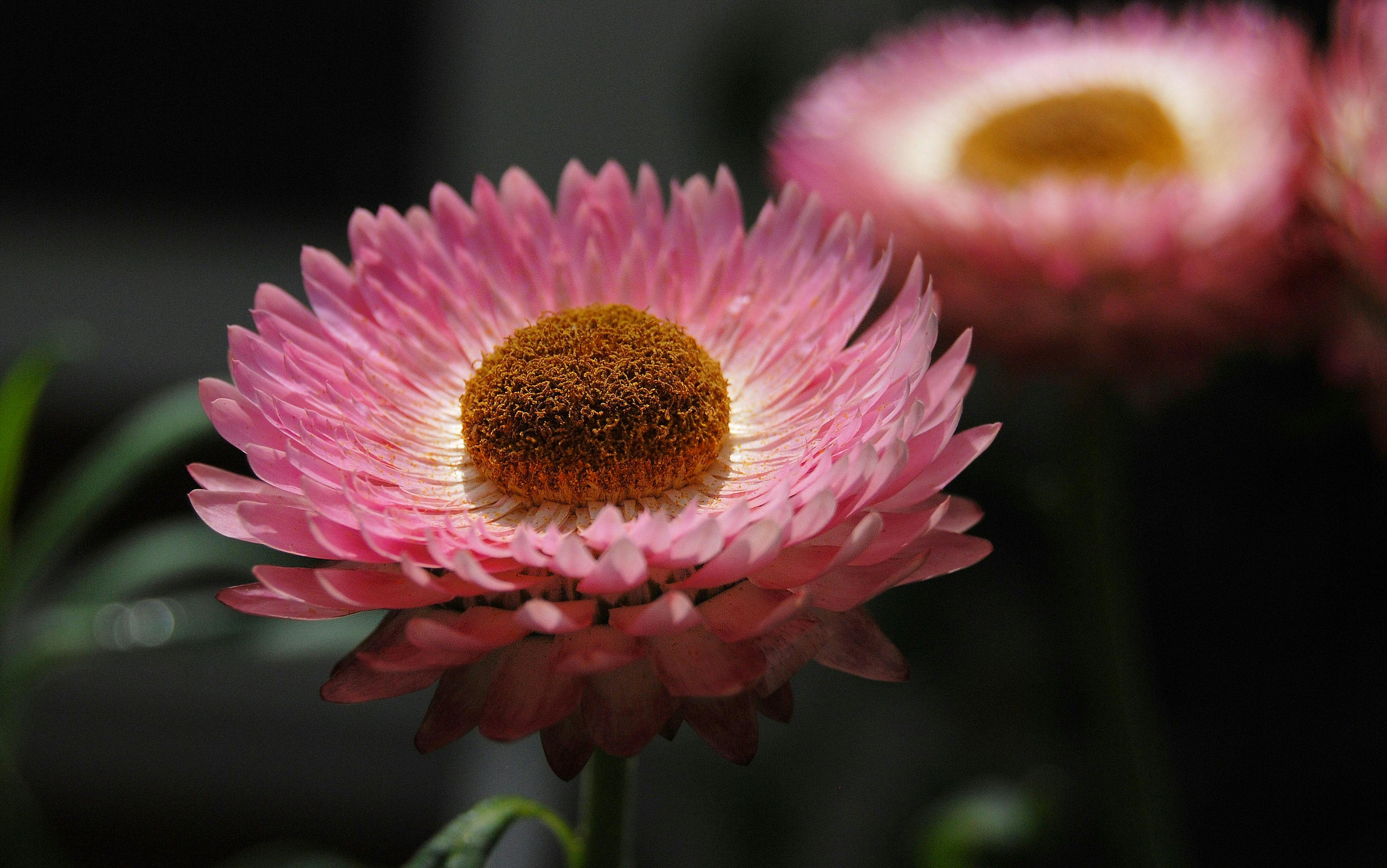
Harvesting and Using Strawflowers
One of the most enjoyable aspects of growing strawflowers is harvesting them for dried arrangements. To harvest, wait until the flowers are fully open and dry. Cut the stems in the morning after the dew has dried, and strip off any excess foliage. Bundle the stems together and hang them upside down in a cool, dry, and dark location to dry completely. Once dry, the flowers can be used in wreaths, arrangements, or as decorative accents. Strawflowers retain their color and shape well, making them a popular choice for long-lasting floral crafts. Store dried strawflowers in a cool, dry place to maintain their appearance.
Winter Care
In regions with mild winters, strawflowers generally do not require special winter care, as they are annuals that complete their life cycle within a single growing season. In colder climates, you can remove the plants at the end of the growing season and prepare the soil for next year. Adding a layer of mulch to the garden bed can help protect the soil structure and prevent erosion. For container-grown strawflowers, you can either bring the containers indoors or dispose of the plants and clean the pots for next season. If you plan to grow strawflowers again, prepare your garden beds and soil in advance to ensure a successful planting season.

Companion Plants
Strawflowers pair beautifully with a variety of other garden plants. Their bright, papery blooms complement the soft textures of ornamental grasses, such as fountain grass or feather reed grass. They also look stunning alongside other flowering perennials like coneflowers, black-eyed Susans, and cosmos. When creating flower arrangements, consider mixing strawflowers with sunflowers, zinnias, or lavender for a vibrant and textured display. The contrast of strawflowers’ unique petals with the shapes and colors of companion plants will enhance the visual appeal of your garden and floral arrangements.

Frequently Asked Questions about Strawflowers
What is strawflower used for?
Strawflowers, known scientifically as Xerochrysum bracteatum, are celebrated for their versatility in both garden settings and floral arrangements. Their primary use is as ornamental plants, offering vibrant, long-lasting blooms in shades of yellow, pink, red, and orange. These flowers are highly valued in dried flower arrangements due to their papery texture, which allows them to retain their shape and color for months or even years after being harvested. In addition to decorative uses, strawflowers are also employed in craft projects and as unique elements in wreaths and garlands. Their resilience and minimal maintenance requirements make them a popular choice for gardeners looking to add lasting beauty to their spaces. With their ability to withstand drying and maintain visual appeal, strawflowers are a favorite among floral enthusiasts and gardeners alike.
How long do straw flowers last?
Strawflowers, known for their vibrant and papery blooms, can last a remarkably long time both on the plant and after harvest. In the garden, strawflowers typically bloom from late spring to early fall, lasting about 2 to 3 months. Their long-lasting nature extends to their use as dried flowers. Once harvested, strawflowers can maintain their color and shape for several years when properly dried and stored. To preserve their longevity, cut the flowers at their peak and hang them upside down in a cool, dry, and dark area to prevent fading. Stored in a dry and cool environment, dried strawflowers remain a beautiful and durable addition to floral arrangements, crafts, and decorations for many years. Their resilience and enduring beauty make them a popular choice for both fresh and dried floral displays.
Are strawflowers annuals or perennials?
Strawflowers (Xerochrysum bracteatum) are annual plants, meaning they complete their life cycle in one growing season. They are known for their long-lasting, vibrant blooms that retain their color and shape even after being dried, making them popular in dried flower arrangements and crafts. Although strawflowers are annuals, they can reseed themselves in the garden, which may give the appearance of perennial growth if conditions are favorable. Their drought tolerance and ability to thrive in poor soil conditions make them a popular choice for gardens, especially in areas with hot, dry climates. When grown as annuals, strawflowers bring a burst of color to garden beds, borders, and containers throughout the growing season.
What’s another name for strawflowers?
Strawflowers, scientifically known as Xerochrysum bracteatum, are also commonly referred to as “paper daisies” due to their papery, dry petals that resemble daisies. Another name you might hear is “everlasting flowers,” a nod to their ability to maintain vibrant color and form even after drying. The name “golden everlasting” is also used, especially when referring to the golden-yellow varieties. These alternative names highlight the strawflower’s unique qualities, such as its long-lasting blooms and the texture of its petals, which make it a popular choice for both fresh and dried arrangements. Whether you call them strawflowers, paper daisies, or everlasting flowers, these plants are beloved for their durability and striking appearance, making them a favorite in gardens and craft projects alike.
Is strawflower edible?
Strawflowers (Xerochrysum bracteatum) are not considered edible and should not be consumed. While these vibrant and hardy flowers are admired for their beauty and long-lasting blooms, they are primarily used for ornamental purposes, particularly in floral arrangements and craft projects. Unlike some other edible flowers, strawflowers do not have culinary applications due to their tough, papery texture and potential for causing digestive discomfort if ingested. Gardeners and crafters appreciate strawflowers for their durability and visual appeal, especially in dried arrangements, but they are best enjoyed visually rather than as a part of any meal. If you’re looking for edible flowers to grow, consider alternatives like nasturtiums, pansies, or calendula, which are safe and commonly used in culinary dishes. Always research and confirm the edibility of flowers before incorporating them into food or drink to ensure safety.
What can I make with straw flowers?
Strawflowers (Xerochrysum bracteatum) are versatile and perfect for a variety of creative projects due to their long-lasting, papery blooms. One popular use is in dried flower arrangements, where they add vibrant color and texture. You can create beautiful wreaths, bouquets, and garlands with strawflowers that maintain their appeal for months. These flowers are also excellent for crafting decorative ornaments, such as pressed flower art, picture frames, and gift toppers. Another fun idea is to incorporate them into homemade potpourri blends, where their bright hues can complement fragrant dried herbs and flowers. Strawflowers are even used in making floral crowns or hair accessories, giving a unique, rustic touch to any outfit. Their durable nature makes them ideal for any craft project where longevity and color retention are important. With a bit of creativity, strawflowers can be transformed into stunning decorative pieces that brighten up your home.

Can you harvest seeds from straw flowers?
Yes, you can harvest seeds from strawflowers (Xerochrysum bracteatum), making it easy to grow them year after year. To collect seeds, wait until the flowers have fully bloomed and the petals start to dry out. Once the central disc of the flower turns brown and the seeds begin to form, gently remove the flower head. You’ll notice small, black seeds attached to the base of the flower, surrounded by fluffy, white pappus (similar to dandelion seeds). Carefully separate the seeds from the fluff by rubbing the flower head between your fingers. Store the seeds in a cool, dry place in a labeled envelope or container until you’re ready to plant them. Harvesting seeds from strawflowers allows you to preserve your favorite varieties and ensures a continuous supply of these vibrant blooms in your garden. Plus, growing them from seed is a rewarding way to enjoy their beauty all over again.
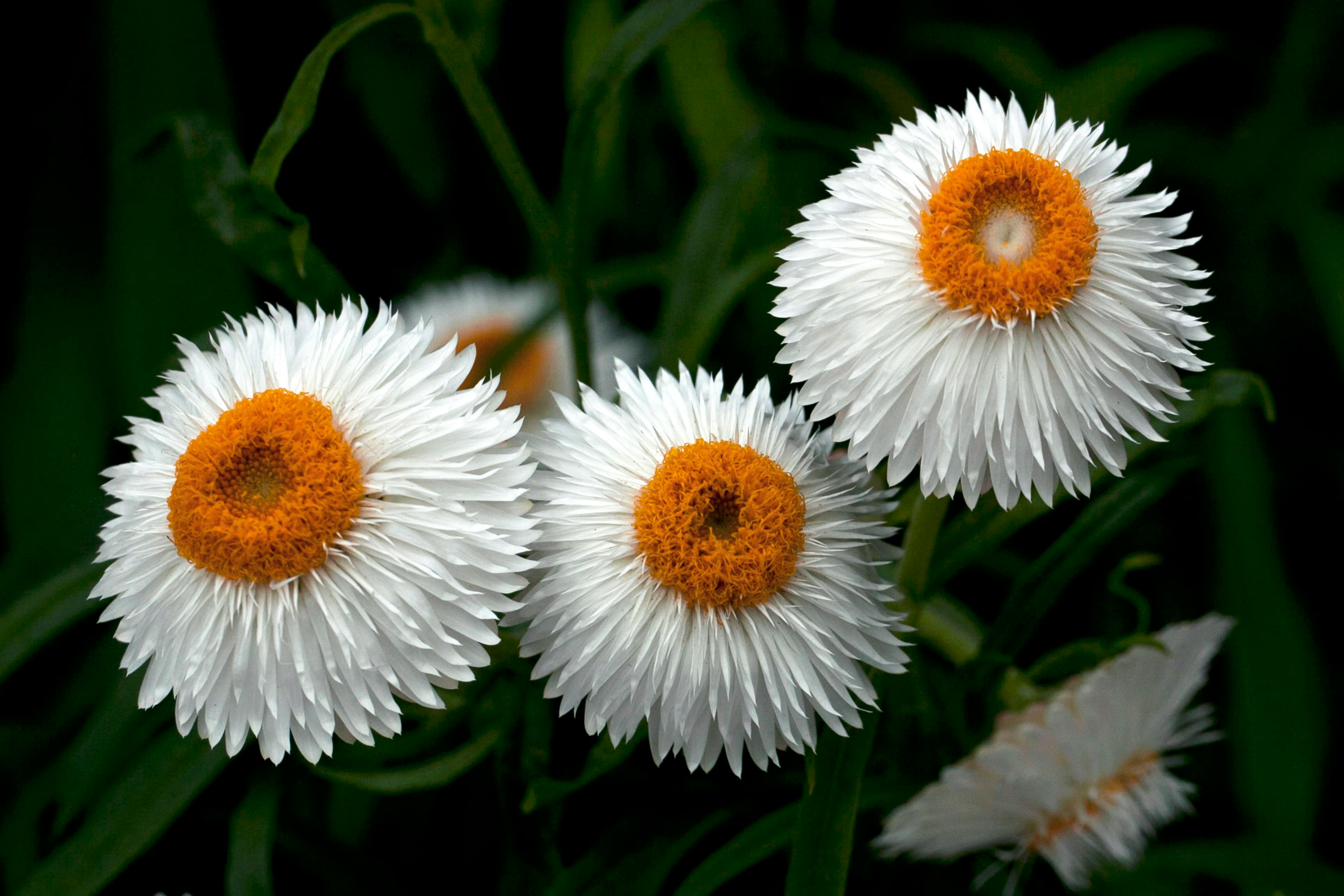
Can you grow straw flowers from cuttings?
Yes, you can grow strawflowers (Xerochrysum bracteatum) from cuttings, although they are more commonly propagated from seeds. To propagate strawflowers from cuttings, choose a healthy, non-flowering stem from the parent plant. Cut a 4 to 6-inch section just below a leaf node, removing the lower leaves to expose the stem. Dip the cut end in rooting hormone to encourage root development, then plant the cutting in a well-draining potting mix. Keep the soil consistently moist but not soggy, and place the pot in a warm, bright location, away from direct sunlight. Within a few weeks, the cutting should develop roots and start to grow. Once the new plant is established and shows signs of growth, you can transplant it into your garden or a larger container. Growing strawflowers from cuttings is a great way to replicate your favorite plants and expand your garden with minimal effort.

Are strawflowers fragrant?
Strawflowers (Xerochrysum bracteatum) are admired for their vibrant colors and long-lasting blooms, but they are not known for their fragrance. Unlike many other flowers that release a pleasant scent, strawflowers are valued more for their visual appeal than their aroma. Their unique, papery petals give them a striking appearance, making them popular in dried flower arrangements and bouquets. The lack of fragrance doesn’t detract from their beauty, as strawflowers still attract pollinators like bees and butterflies to the garden. Their resilience and ability to retain their color and shape even after drying make them a favorite for both fresh and preserved displays. While they might not fill your garden with a sweet scent, strawflowers will certainly add a burst of color and texture that lasts long after the growing season has ended.
How long do strawflowers take to dry?
Strawflowers typically take about 2 to 3 weeks to dry completely, depending on the drying method and environmental conditions. These flowers are well-known for their ability to retain vibrant colors and structure after drying, making them ideal for long-lasting arrangements. To dry strawflowers, cut them at their peak bloom, strip off the leaves, and hang them upside down in a cool, dark, and well-ventilated space. This method ensures they dry evenly and retain their brilliant hues. Alternatively, you can dry them using silica gel, which can speed up the process slightly. Whether air-drying or using other techniques, patience is key to preserving their beauty. Once dried, strawflowers can last for years, maintaining their shape and color, making them perfect for use in dried bouquets, wreaths, or crafts. This longevity makes the drying process worth the wait for those looking to enjoy their charm beyond the growing season.
Do strawflowers self-seed?
Yes, strawflowers can self-seed under the right conditions. These hardy annuals produce numerous seeds that can fall to the ground and sprout the following season, especially in warm climates. To encourage self-seeding, you can leave a few flower heads on the plants after blooming. As the flowers dry out, they form seed heads that disperse seeds naturally. If your garden provides the right environment—well-drained soil and plenty of sunlight—these seeds can germinate on their own, giving you a fresh batch of strawflowers the next year without much effort.
However, if you prefer a more controlled garden, you can collect the seeds yourself and plant them where you want new growth. While self-seeding is possible, it’s essential to note that not all seeds will take root, so planting a few extras can help ensure a vibrant display of strawflowers next season.
What are some fun facts about Strawflowers?
Here are some fun facts about strawflowers:
- Long-Lasting Blooms: Strawflowers are renowned for their long-lasting blooms, often retaining their vibrant colors and shape for several months, making them popular for dried arrangements.
- Drought Tolerance: These flowers are highly drought-tolerant, thriving in dry conditions with minimal water, which makes them ideal for low-maintenance gardens.
- Attract Pollinators: Strawflowers attract beneficial pollinators like bees and butterflies, supporting local ecosystems and enhancing garden biodiversity.
- Wide Color Range: Available in a variety of colors, including pink, yellow, orange, and red, strawflowers can brighten up any garden space with their vivid hues.
- Easy to Grow: They are simple to grow from seeds, making them a great choice for beginner gardeners looking to add a splash of color to their garden.
How long does it take for straw flower seeds to germinate?
Strawflower seeds typically take about 7 to 14 days to germinate under optimal conditions. For best results, start seeds indoors 6 to 8 weeks before the last frost date. Use a seed-starting mix and maintain a temperature between 70-75°F (21-24°C) to encourage germination. Ensure the seeds are lightly covered with soil and kept consistently moist but not waterlogged. Good light exposure is crucial; provide bright, indirect light or use grow lights to help the seedlings thrive. Once germination occurs, thin the seedlings to prevent overcrowding and ensure healthy growth. Transplant the young plants outdoors after the danger of frost has passed and when they have developed strong root systems. By following these guidelines, you can successfully grow vibrant strawflowers that will brighten your garden with their long-lasting blooms.
Why is my Strawflower dying?
If your strawflower is dying, several factors might be at play. First, ensure it’s receiving adequate sunlight. Strawflowers need at least 6 hours of direct sunlight daily. Overwatering or poor drainage can also cause issues; strawflowers prefer well-draining soil and should only be watered when the top inch of soil feels dry. Additionally, check for pests like aphids or fungal infections that could be harming the plant. Over-fertilization or using the wrong type of fertilizer can also stress strawflowers. Make sure you’re using a balanced, all-purpose fertilizer and follow the recommended application rates. Lastly, ensure your plants are not overcrowded, as this can lead to poor air circulation and increased risk of disease. By addressing these factors, you can improve the health of your strawflowers and ensure they thrive in your garden.
Why are my strawflowers turning black?
If your strawflowers are turning black, it’s likely due to a few common issues. One possibility is fungal infection, such as botrytis blight, which thrives in damp conditions and causes dark, mushy spots on flowers. Ensure your plants are not overwatered and that they have good air circulation to prevent excess moisture. Another reason could be sunburn; strawflowers exposed to intense, direct sunlight for extended periods may develop blackened areas. Providing some afternoon shade can help. Additionally, black spots can result from a nutrient deficiency or an imbalance, so check your fertilization routine and soil health. Lastly, consider checking for pests or diseases that could be causing the discoloration. Promptly addressing these issues can help restore the health of your strawflowers and prevent further damage.
Why is my strawflower wilting?
If your strawflower is wilting, several factors could be at play. Overwatering is a common cause, as excessive moisture can lead to root rot, preventing the plant from absorbing nutrients properly. Ensure your strawflowers are planted in well-draining soil and allow the top inch to dry out between waterings. Underwatering can also cause wilting; if the soil is too dry, your plant may struggle to maintain its turgor pressure. Check the soil regularly and water when the top inch feels dry. Additionally, wilting can result from too much direct sunlight, especially during the hottest parts of the day. Providing some afternoon shade can help. Pests or diseases could be another reason, so inspect your plants for any signs of damage. Addressing these issues promptly will help revive your strawflowers and keep them thriving.
Why are the leaves on my strawflower plant drooping?
Drooping leaves on your strawflower plant can indicate a few issues. One common cause is underwatering. Strawflowers require consistent moisture, so if the soil is dry, the leaves may droop as the plant struggles to retain water. Check the soil and water thoroughly if it’s dry. Conversely, overwatering can also lead to drooping leaves. Excess moisture can cause root rot, making it difficult for the plant to absorb nutrients. Ensure the soil drains well and allow the top inch to dry out between waterings. High temperatures or direct sunlight can cause stress, leading to drooping leaves. Providing some shade during the hottest part of the day may help. Finally, check for signs of pests or diseases, as these can also cause drooping. Address these issues promptly to restore your strawflower’s health and vitality.
Strawflowers are a wonderful addition to any garden, offering vibrant color, texture, and versatility. By understanding their needs and following these detailed care tips, you can ensure that your strawflowers thrive and provide a stunning display throughout the growing season. Whether you’re using them to brighten up your garden or creating beautiful dried arrangements, strawflowers are sure to bring joy and beauty to your home.


